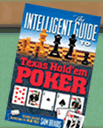Increase your Chances of Success by Understanding Hand Combinations
With Texas Hold'em essentially being a game that boils down to trying to make the highest value hand, professional players will have a good idea of their chances of doing that just by looking at their first two cards. Of course, position in the hand plays a big part in what decisions players should make, because a late position allows for playing a much wider range of starting cards. Here are some tips to understanding hand combinations and how they affect the game pre- and post-flop.
Pre-flop Hands
Beginner players may know that getting dealt an ace or a king pre-flop is a good thing, but the extent of their forward-thinking on this matter may end there. Whether playing online or in a brick and mortar establishment, there are so many things to take into consideration with these first two cards. Players need to decide whether they are happy to call the big blind, call a raise, or even bet themselves. The size of bets for monster hands like pocket aces depends on the stage of the game, the size of the blinds, and what kind of opponents you are facing. Sometimes it’s best to slow play a hand with big potential to reel people in and milk them of their stacks, other times it's best to make big moves to eliminate players on draws. It depends on whether the player is in a position of control at the table or whether they need to double up fast.
Generally, players need to think about the potential hands their first two cards could go on to make. Getting a couple of high cards, such as king/ten, for example, is a good starting point. If they are of the same suit, the chances of making a strong hand are even higher. After bullets, ace/king suited is the best possible starting hand and can be much stronger than a pocket pair post-flop. This is because it can draw into high pairs, a straight, or a flush.
Players should always be looking to play with a pocket pair, as they have the chance of hitting a set on the flop. Other hands that have good potential to turn into something strong post-flop include suited connectors, which could end up making a straight or a flush.
Post-flop Combinations
When betting on poker, there is a pre-flop round of betting, followed by betting after the flop, turn, and river. If you play a low pocket pair and don't hit your set on the flop, it's often unwise to keep fishing on the turn if players bet. If everyone checks and you have position, however, you could opt to check for a free card or put down a large bet to try and get your opponents off their draws.
With suited connectors there are various things to consider on the flop. The chances of actually flopping a straight or a flush are fairly slim, but you could get two of the cards you need to complete your hand. For example, if your two cards are the 9 and 8 of diamonds and the flop comes down 7, 10, 2, you have an open-ended straight draw with eight outs. Any jack or six would give you a straight. If two of the cards on the flop are diamonds, your number of outs is increased further as any diamond on the turn or river would give you a flush.
When analyzing whether to bet on the flop, you need to consider other player' ranges. As mentioned before, there are many hands that players muck pre-flop. They are going to play pocket pairs, suited connectors, and high cards. When thinking about how to bet on the flop, players need to think about whether their opponents are drawing to anything and attempt to bet them off their draws.
Poker isn't an exact science, but there are certain hands that players should aim to play every time and hands that should always be mucked. After the flop, players need to calculate their chances of making a good hand based on their draws, and also try to figure out their opponents' range and what they could be holding.

